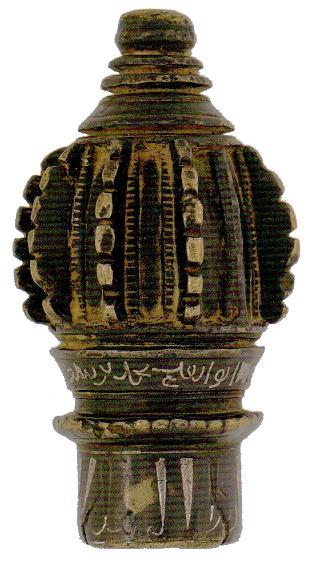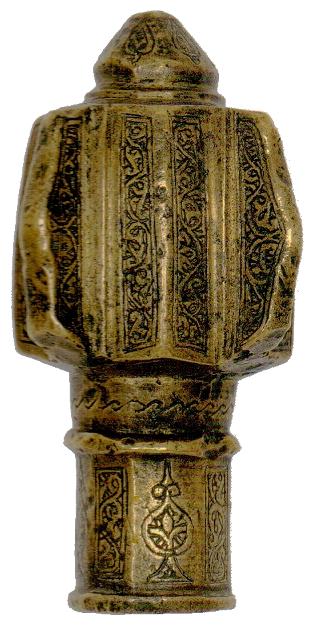
Amazon Audible Gift Memberships
Iranian Flanged Maces
An extract fromThe Arts of the Muslim Knight
The Furusiyya Art Foundation Collection
by Bashir Mohamed, 2008
 |
236 Mace head Iran, thirteenth-fourteenth century Copper alloy, silver L. 9.3 cm Inv. R-99 Inscribed  Abū al-Fath Muḥammad ibn Sultān aldunya al saad al'azam ala al dunya wa din, al sultan al azam The mighty Sultan Lord of the world and religion This mace is inlaid in silver with two bands of Arabic inscriptions in cursive scripts, the upper band records a Sultan's name and the lower band, written in a more elegant style, gives a series of titles typical of the thirteenth to fourteenth century. The form of the mace and the lower inscription indicate a date in the thirteenth to fourteenth century. It is possible that the upper inscription by a different and less talented hand was added at a later date. It has been attributed to the last Khwarazam Shah, Ala al-Dīn.1 1 Simon Digby in Islamic Art, exhibition catalogue. Spink and Son Ltd, 1977. The name and titles are not uncommon, so the attribution must remain uncertain. |
 |
237 Mace head Iran, Saljūq-Mongol period, early fourteenth century Copper alloy L. 12cm Inv. R-98 This mace head is of the same type as is illustrated in the Compendium of Chronicles of Rashid al-Din dated 1314. A similar mace head is in the Nour Collection.1 1 Alexander 1992, p.64, no. 23. |
Referenced as figure 449 in The military technology of classical Islam by D Nicolle 449. Ceremonial miniature mace-head inscribed to Abu'l Fatḥ Muḥammad ibn Sultān 1199-1220 AD, Khurāsānī or Transoxanian, Spinks Exhibition, April 1977, London. |
See also Seljuk Maces
Maces by David Nicolle, an extract from The military technology of classical Islam
Persian Illustrations of Costume & Soldiers
Ilkhanid Mongol Illustrations of Costume & Soldiers